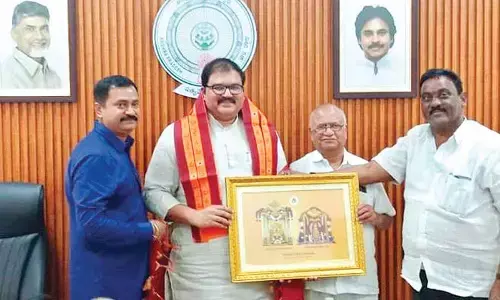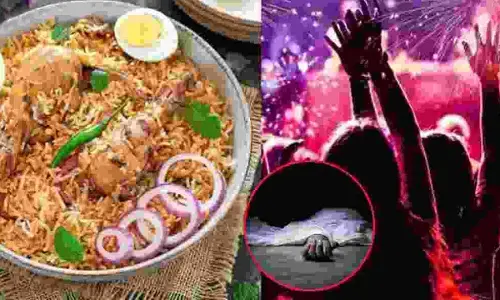National Museum turns disabled friendly

National Museum turns disabled friendly. For the first time in the 55 years since the National Museum in New Delhi has opened its doors to people, tactile paths have been laid and tactile objects displayed for an ongoing exhibition to create a better environment for the visually-impaired.
For the first time in the 55 years since the National Museum in New Delhi has opened its doors to people, tactile paths have been laid and tactile objects displayed for an ongoing exhibition to create a better environment for the visually-impaired. The pilot project also aims at a better understanding of how to make the museum accessible to persons with disabilities. For the "Cadence and Counterpoint: Documenting Santhal Musical Tradition" exhibition, the museum has laid yellow and black tactile mats on the floor that serve different purposes.
.jpg)
"The surface of yellow mat is softer than the black one which indicates that you have to walk till you reach the harder surface. This surface is to indicate that you have to stop and listen to the audio guide, or touch a tactile object," Joyoti Roy, projects coordinator (Museums and Archives) at National Museum, said on Sunday. Tactile paving, also known as truncated domes, is a system of textured ground surface to assist people who are blind or visually impaired.
The team for this project has created audio guides that come with the skip facility. "This part is important because we are giving them a choice to explore the exhibition at their own will," said Roy. The exhibition comprising musical instruments throws light on the rich Santhal musical tradition, for which the museum has tied up with Saksham, a trust that works for the marginalised sections, which has produced the audio guide and a Braille instruction guide to direct them about pit stops during the walk.
Activists fighting for disabled rights have often said that India has not been able to create a friendly infrastructure for the differently-abled in public spaces and they, thus, face inequality in their daily lives and are often deprived of access to culture and arts institutions. Except for Mumbai';s Chhatrapati Shivaji Maharaj Vastu Sangrahalaya, which offers wheelchairs, information in Braille and elevators for the differently-abled, no other museum in India has facilities that could cater to the needs of such people. This exclusion makes them more introvertish and often restricts their movement within the public spaces.
However, some of the renowned art institutions in the West like Spain';s Prado Museum, The US Metropolitan Museum of Art and several museums in Hong Kong offer facilities to differently-abled people to ensure they are included in everyday activities. For instance, the Prado Museum opened an exhibition "Touching the Prado" for the visually impaired in March and encouraged them to touch the artworks.
The Madrid-based gallery has a tactile gallery for the blind that includes guided tours and maps. The Metropolitan offers designated parking, sign language interpretation and large prints to make its services accessible to all audiences. Many museums in Hong Kong offer elevators to go to the exhibition galleries, toilets for wheelchair users and step-free access for wheelchair users at all levels, among others.
"The physical disability of a person shouldn';t be an obstacle when it comes to accessing public art institutions. We should be moving towards an inclusion policy where the differently-abled get a choice to do what they want at a time convenient to them," Vijay Raghavan, Unesco';s programme assistant for culture, said. By the end of this year, the National Museum aims to create a separate disabled-friendly gallery, while the first-phase of coordinating among different in-house departments and artworks to be displayed has already been done.
By Shilpa Raina

















